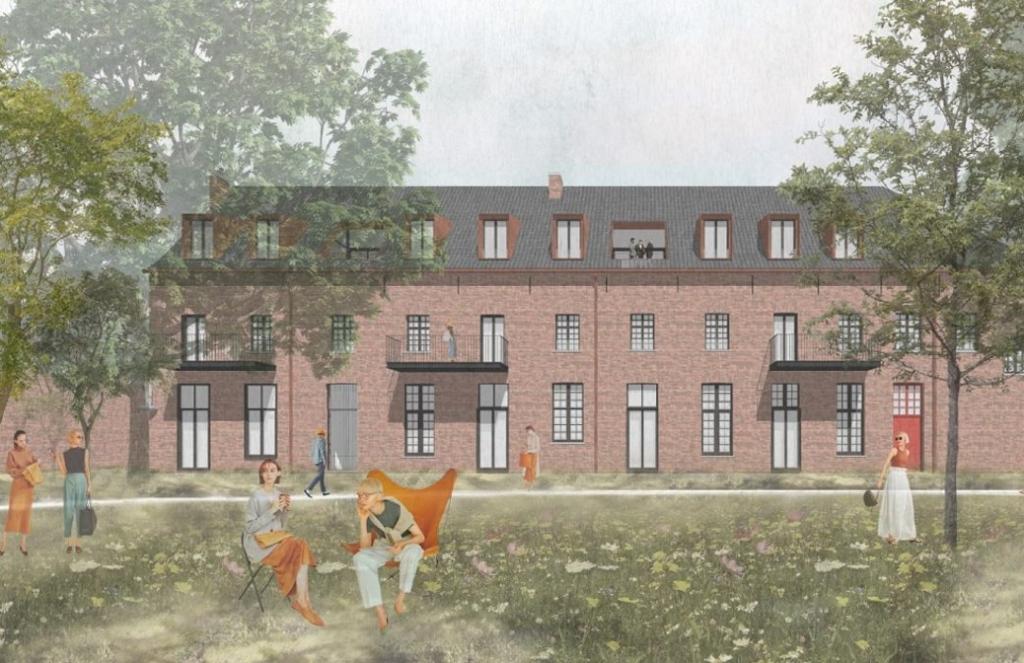Thessaloniki gets ready for its metro launch in November
The underground rapid transit lines have been under construction for almost two decades due to various project delays
 TheMayor.EU logo
TheMayor.EU logo 
The complex will also feature a green area, something that most of Bruges lacks, Source: bildt via City of Bruges
The Carmel – Atelier de Notre Dame will feature a geothermal system, that can both cool and warm the new apartments
Today, authorities in Bruges, Belgium, announced that they will convert a Carmelite Monastery into a residential complex of single-family homes, apartments and lofts. The shift in the building’s use is quite significant for the region, as much of Bruges is considered a UNESCO world heritage site, being among the finest conserved examples of Medieval European cities.
A rich architectural heritage, however, comes with its own set of challenges, including the fact that local authorities have a hard time with new, large-scale development. Thus the Carmel – Atelier de Notre Dame church and monastery will shift from a religious site to regular housing.
The Carmelite Monastery was built over a previous structure, while different parts of the complex date back to different times. According to municipal records, however, the site has been used for religious purposes since at least the early 16th century.
Furthermore, the chapel was built in a neo-Gothic style and dates back to the 19th century, while much of the monastery accommodations have been used by Teresian Sisters since 1817. The complex also features a large green space, which opens the possibility for new development in this historic section of the city.
Work on the complex will start in spring 2023 and people will be able to start moving in in 2026. Importantly, according to the city, much of the historic façade will remain intact and development will focus on the interior. By the end, the Carmelite Monastery will offer six single-family homes, 13 apartments and a loft, that will occupy the former church.
Moreover, the garden will be transformed into a pavilion with bicycle sheds while the whole complex will be equipped with a geothermal system. It will, in turn, offer the new complex a sustainable heating and cooling system.

The underground rapid transit lines have been under construction for almost two decades due to various project delays

Now you can get your wine in Talence by paying directly in Bitcoin

That’s because the state has to spend money on updating the railway infrastructure rather than subsidizing the cost of the popular pass

Rethinking renewable energy sources for the urban landscape

The examples, compiled by Beyond Fossil Fuels, can inform and inspire communities and entrepreneurs that still feel trepidation at the prospect of energy transition

Now you can get your wine in Talence by paying directly in Bitcoin

The 10th European Conference on Sustainable Cities and Towns (ESCT) sets the stage for stronger cooperation between the EU, national and local level to fast track Europe's transition to climate neutrality.

At least, that’s the promise made by the mayor of Paris, Anne Hidalgo

The underground rapid transit lines have been under construction for almost two decades due to various project delays

At least, that’s the promise made by the mayor of Paris, Anne Hidalgo

Hostal de Pinós is located in the geographical centre of the autonomous region

Despite its church-y name, the district has long been known as the hangout spot for the artsy crowds

Urban dwellers across the EU are having a say in making their surroundings friendlier to people and the environment.

Forests in the EU can help green the European construction industry and bolster a continent-wide push for architectural improvements.

Apply by 10 November and do your part for the transformation of European public spaces

An interview with the Mayor of a Polish city that seeks to reinvent itself

An interview with the newly elected ICLEI President and Mayor of Malmö

A conversation with the Mayor of Lisbon about the spirit and dimensions of innovation present in the Portuguese capital














